21 Nov 2022 - {{hitsCtrl.values.hits}}
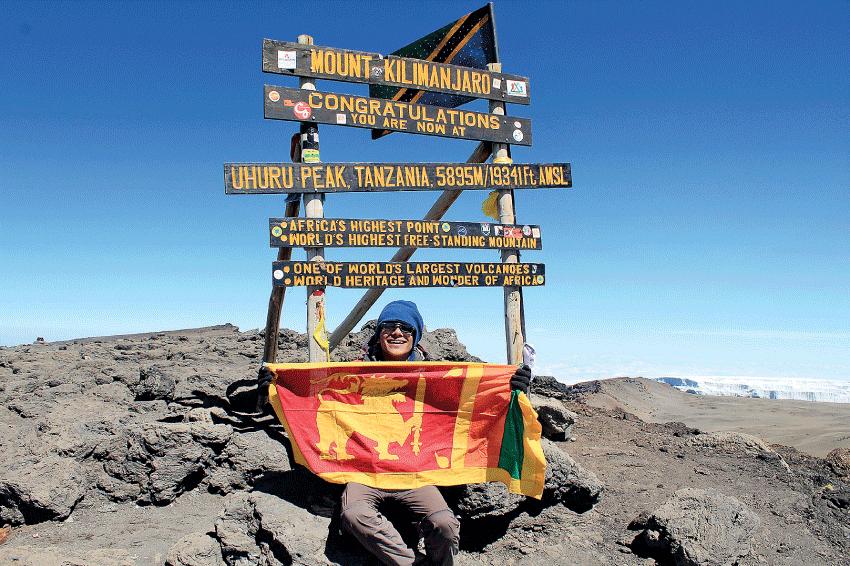
 Avinash Van Dort made headlines last month as the youngest Sri Lankan to climb Mount Kilimanjaro at age 17. Avinash made it to Uhuru Peak – Mount Kilimanjaro’s highest point – on 10th October 2022 proudly carrying the Sri Lankan flag to the top. Located in Tanzania, 5895m above sea level, Mount Kilimanjaro is Africa’s tallest mountain and the highest free-standing mountain in the world. This snow-capped peak of Africa is a dormant volcano found inside the Kilimanjaro National Park of Tanzania and is one of the Seven Summits of the World. While climbing Kilimanjaro is not known to be a difficult hike, the altitude and the rate of ascent has presented itself as a challenge to many.
Avinash Van Dort made headlines last month as the youngest Sri Lankan to climb Mount Kilimanjaro at age 17. Avinash made it to Uhuru Peak – Mount Kilimanjaro’s highest point – on 10th October 2022 proudly carrying the Sri Lankan flag to the top. Located in Tanzania, 5895m above sea level, Mount Kilimanjaro is Africa’s tallest mountain and the highest free-standing mountain in the world. This snow-capped peak of Africa is a dormant volcano found inside the Kilimanjaro National Park of Tanzania and is one of the Seven Summits of the World. While climbing Kilimanjaro is not known to be a difficult hike, the altitude and the rate of ascent has presented itself as a challenge to many.
Avinash is a second year IB diploma student at United World College East Africa (UWCEA) and is a part of the college’s Outdoor Pursuits (OP) programme that aims to integrate students of diverse cultures through hiking and nature. Avinash joined the Mt. Kilimanjaro expedition organized by the OP team along with 50 of his classmates and faculty and embarked on a 6-day journey to the highest peak of Africa.
There are seven main routes which lead to the summit of which the Marangu route, also known as the ‘Coca-Cola’ route, is the oldest and most established route on Kilimanjaro. Following the Marangu route, Avinash and the group started the trek from the university to Mandara Huts and then to Horombo Huts where they spent a full day at Horombo acclimatizing to the 3700m elevation before reaching Kibo Hut. Though the Marangu route is considered to be the easiest path on the mountain given its gradual slope and direct path, the short time frame of the route makes altitude acclimatization fairly difficult.
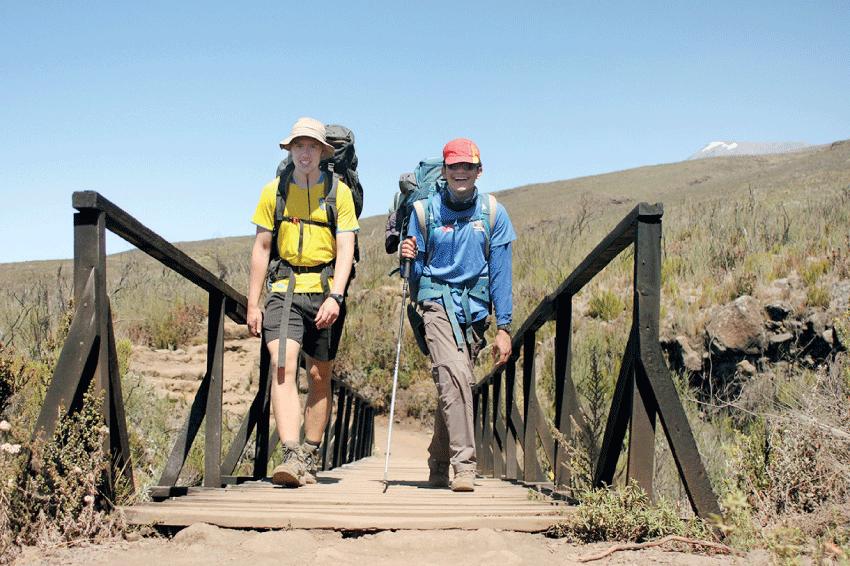
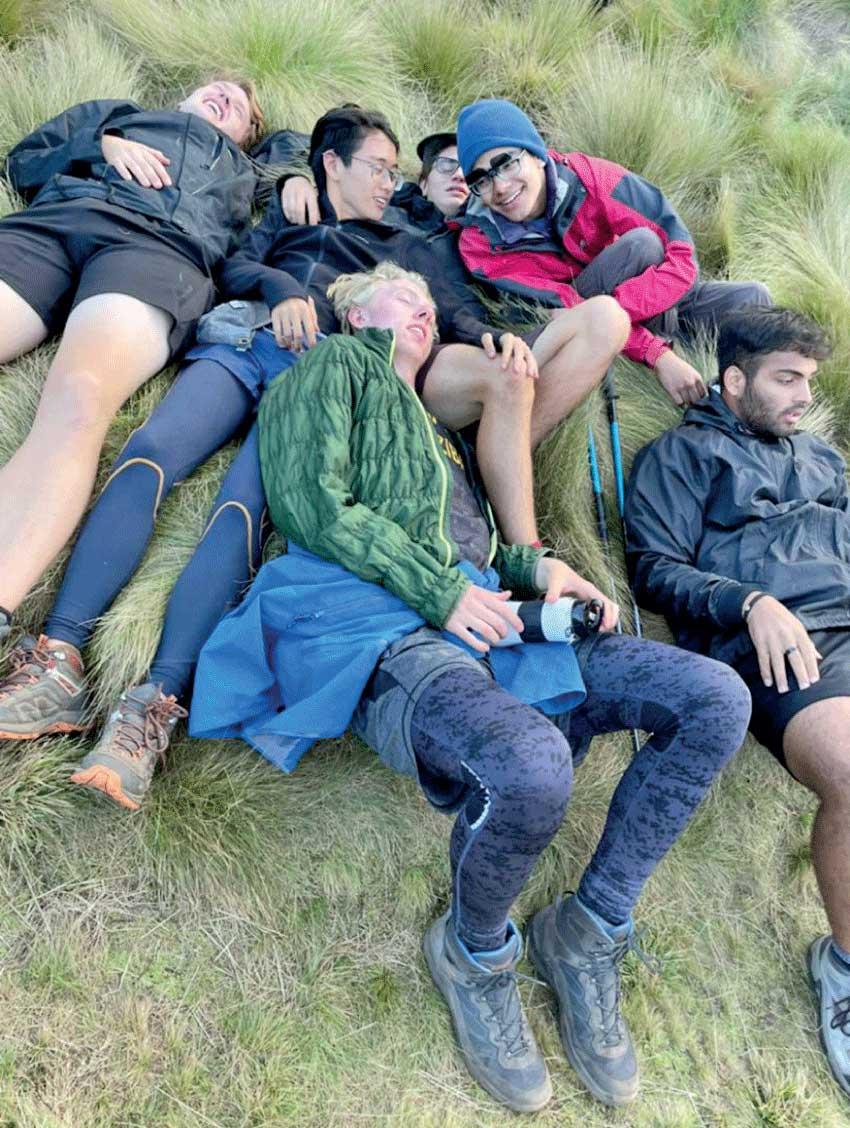
Avinash however is not new to altitude acclimatization; his previous hikes to North Pare Mountains at 6932 ft, Mount Hanang at 11230 ft and Mount Lolmalasin at 11969 ft has given him first-hand experience in adjusting to the altitude. But despite the experience and the mental training the university prepared them for in advance, climbing Mt. Kilimanjaro was a whole other challenge altogether. “Even though the university prepared us on how to deal with the change in altitude, nothing could have prepared me for how it actually felt. On day 4, when we were hiking from Horombo to Kibo Hut, that’s when we really started to feel the altitude. It’s such a strange phenomenon, it feels like there is a concrete wall in front of you and your lungs are being restricted by that wall with every step you take. It is difficult to think or even process words at this point –there is a cloud in your head. You have to constantly remind yourself that this is all psychological, that you can breathe. Everything just felt heavier.”
On Day 5, Avinash and the team finally reached Uhuru Peak – the official summit of Mt. Kilimanjaro at 19,340 ft above sea level. Dubbed ‘the roof of Africa’ the summit is a majestic sight to behold but hikers are only allowed a short 10-15 minutes to bask in the joy of reaching the peak before they have to descend. This is because at the summit of Kilimanjaro, there is only 49% of the oxygen available at sea level (normal level of oxygen saturation is 95% or higher) and the lack of oxygen at the top causes the body to undergo certain physical and psychological changes to adapt. “When we finally reached the top, we were all emotionally overwhelmed. The feeling is indescribable – you feel utterly euphoric to have made it to the peak, all the while your body is fighting to stay alive. It’s surreal.”
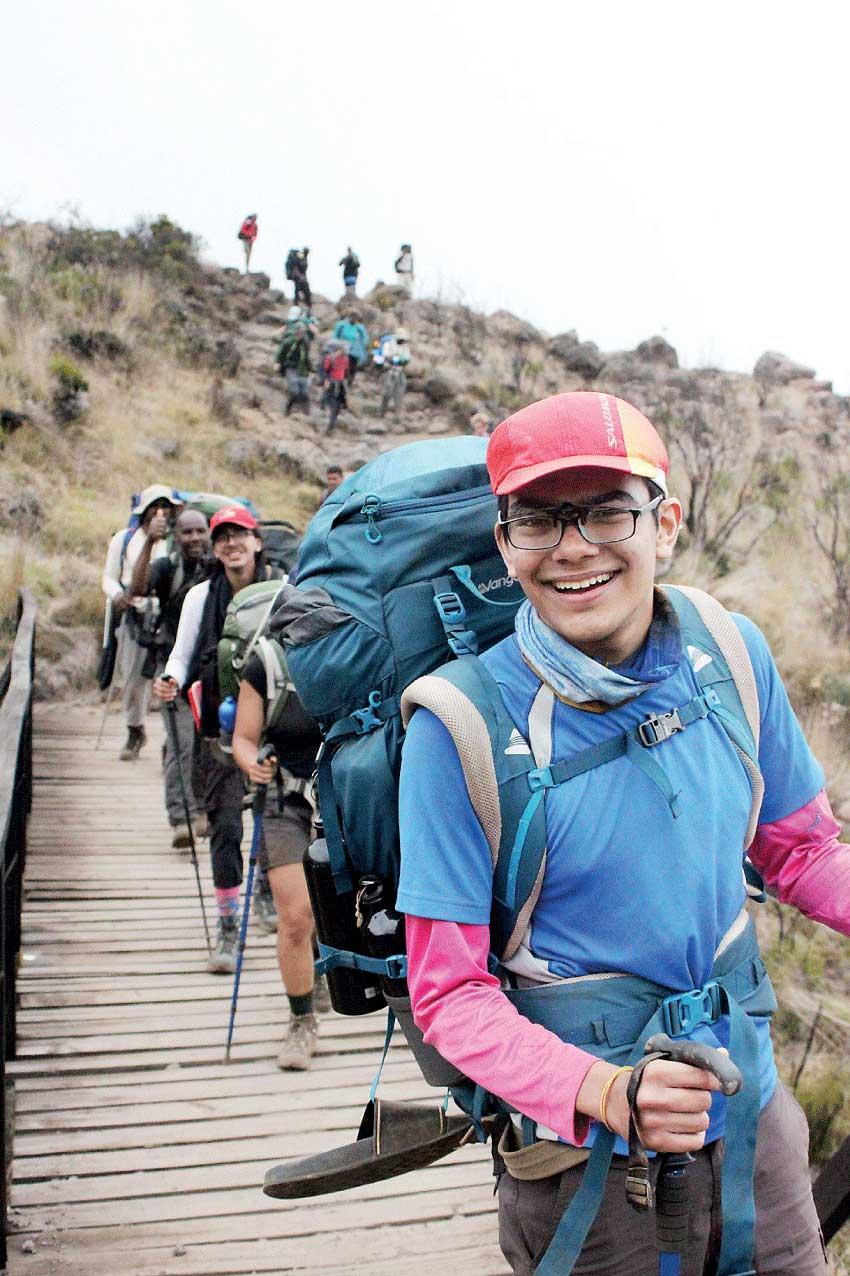
“I was never really the sporty or athletic type of person and in Sri Lanka, if you don’t fit into this type, it forces you to question yourself: about your body and your capabilities. So, climbing Kilimanjaro, being at the peak of the tallest free-standing mountain in the world, it hits you that you are capable, that your body is capable. No one will ever describe me as ‘sporty’ but when you do experiences like this, you develop a sense of self confidence and self-awareness and that filters down across your life and all that you do.”
At the conclusion of his hike, Avinash loses his voice for a few days and he is physically drained and mentally exhausted. While he’s all smiles for the interview, sharing that climbing Kilimanjaro was ‘exhilarating’ and ‘enlightening’, he’s also candid about the challenges of the hike, commenting that though the hike was physically demanding it was the psychological obstacles that confronted him the most through the journey. “We were told to expect the worst but when you are climbing the mountain in sub-zero temperature, your definition of worse gets much worse. Your brain is constantly second guessing – am I really climbing this? Can I? It’s telling you that you can’t. The higher we got, the less oxygen we had and I actually hallucinated for some time. It was definitely disconcerting.”
Despite the mental obstacles, Avinash shared that climbing Kilimanjaro is definitely worthwhile. “The hike is so rewarding because you get to see many different landscapes while climbing to the top. When you start the hike, you are trekking through a rainforest and then all of a sudden, the landscape changes dramatically and you find yourself in heathland. Then when you get closer to the peak, its cold and glacial. It’s an incredible experience.”
“The highlight of the trip was also meeting people. I come from a school with over 100 nationalities in the campus, each of us with different cultural backgrounds. The trek brought us together to foster intercultural understanding. The people I met and the interactions we shared were what motivated me to move forward.” Avinash thanks the UWCEA and the Outdoor Pursuits programme for the experience, especially coordinators Isack Igenge and Isaac Foya and accompany teacher Amanda Bowen.
When asked about his next potential hike, Avinash laughs as he says that it’s ‘too soon to plan’, he’s still recovering from the trip to Kilimanjaro. “But maybe a hike with a different experience. Perhaps Mount Denali in Alaska?”
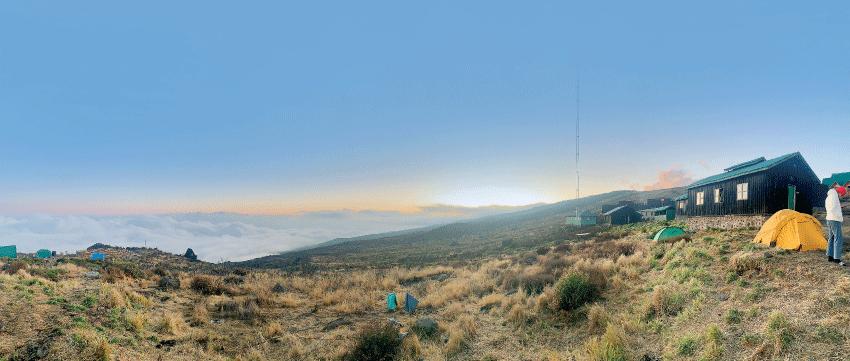
Photo credits - Juan Carlos Diaz & Christian Stuit.
15 Nov 2024 15 Nov 2024
15 Nov 2024 15 Nov 2024
15 Nov 2024 15 Nov 2024
15 Nov 2024 15 Nov 2024
15 Nov 2024 15 Nov 2024